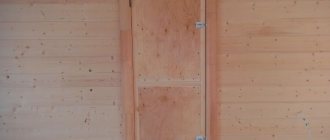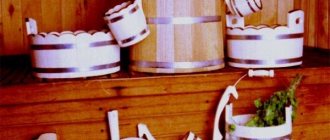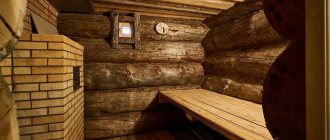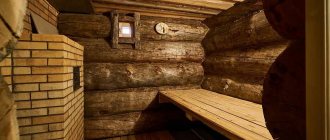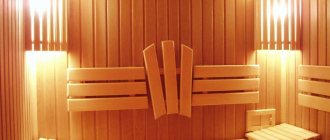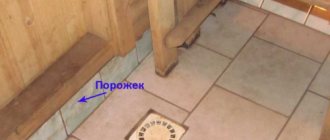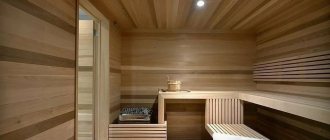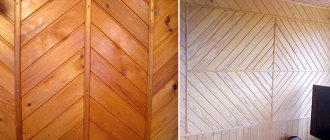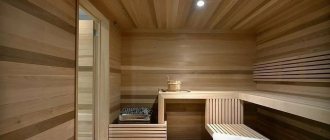Wood is an excellent material for construction work. It is environmentally friendly, durable, and retains heat well in the room. But it also has its drawbacks. The main one is poor resistance to external factors. Fungus, moss and wood-boring beetles often settle on its surface. It does not tolerate moisture well and is susceptible to rotting.
Treating wood with antiseptic
All of these problems can be avoided. It is enough to treat the material with an antiseptic. It can be bought at any building materials store. But it is much easier and more economical to prepare it yourself. How to make a wood antiseptic with your own hands and use it correctly - read about it in our article.
Why do you need to treat wood with an antiseptic?
When a tree is cut down, the fibers in its structure begin to die. Such an environment becomes nutritious for fungi - saprophytes. They destroy wood and paint it in different colors: blue, red, yellow, green. In addition to fungal microorganisms, there are other threats:
- insect pests;
- high air humidity;
- precipitation: snow, rain.
Antiseptic treatment is a mandatory stage of working with wood. It protects against all of these negative factors and extends the life of wooden structures or cladding.
Dependence of wood biostability on external factors
The resistance of wood material to biopests depends on many factors; during the construction and operation of a wooden house, it is important to provide optimal conditions for its protection. Putrefactive fungus affects not only lumber with natural moisture content, but also air-dry and semi-dry construction wood with a moisture content of 18 to 22%. To a greater extent, the activity of putrefactive fungus depends on the environment and the influence of external factors. The development of microorganisms is accelerated in conditions of high humidity, in swampy and low-lying areas; favorable factors for the development of fungus include:
- Constant moisture content of lumber exceeding 18%,
- Water flowing into the cracks between the crowns,
- Direct contact of the tree with moist soil,
- Ambient temperature from +5 to +35 degrees.
Rot most often affects walls facing north and lower crowns. The warm and humid climate promotes the activity of wood-boring insects, which use wood as a product for their livelihoods.
Experts note that the conditions for the development of fungus can be the most unexpected. For example, a house surrounded by a solid high fence is more susceptible to rotting due to insufficient ventilation.
How to prepare the surface for processing?
Before antiseptic treatment, it is necessary to prepare the wood for application of the composition. This is done in several stages:
- Surface cleaning. First you need to remove all dirt or formations that have appeared during operation.
- Grinding. All roughness and surface irregularities are removed by grinding. This way the solution will better penetrate the wood texture.
- Degreasing. Helps completely remove grease and dirt accumulated on the surface. The surface is wiped with white spirit applied to a lint-free cloth.
This method of preliminary preparation is suitable both for processing with ready-made solutions and for those prepared independently. After this, you can begin applying the antiseptic.
Vegetable oils
You can use vegetable oils for impregnation - flaxseed and hemp. It is important to understand that they will change the color of the surface. The wood will “breathe” and retain its properties. To give the composition the best qualities, it is recommended to add burdock, elecampane, galangal or angelica root to flaxseed oil.
The wood will “breathe” and retain its properties.
Types of ready-made wood impregnations
Ready-made antiseptics are sold in almost any building materials store. They differ in purpose, consistency, absence or presence of odor, color and degree of penetration deep into the wood.
Impregnations are made on different bases:
- Water. Such antiseptics do not have an unpleasant odor and are suitable for both external and internal use.
- Acrylic. Acrylics also have no odor, are environmentally friendly and can be used to treat wood both inside and outside the house.
- Saline. Rafter systems are most often impregnated with salt-based solutions to prevent the growth of fungus, pests and mold. They also protect wooden elements from easily igniting. As a rule, wood is immersed in such an antiseptic rather than treated with a brush. Therefore, it is rarely used in private households.
- Oily. Garden furniture is treated with oil solutions,
constantly exposed to ultraviolet radiation, moisture and other external factors.
- Based on alkyd resins. The composition includes antiseptic additives, wax and oil. This impregnation well emphasizes the beauty of the wood texture and protects well from negative natural factors. Disadvantage: long drying time.
- Bituminous. It looks like a thick, black mass. It has a pungent odor and is mainly used for external work. Excellent protection against moisture, but flammable.
- Silicone. Serves as a protective screen from the sun, water and biological destruction. An added bonus is that the silicone layer allows the wood to breathe.
There are special purpose antiseptics. Narrowly targeted compositions focus on solving a specific problem - frost protection, water-repellent effect, antiseptic effect, formation of fire resistance. There are also complex impregnations that combine several of the listed properties or all at once.
Classification
There is a classification of such means, knowledge of which helps to understand which option should be chosen for a particular situation. The following types of products are distinguished:
- For internal processing, they must be harmless to the body;
- For external coatings, they must be resistant to pests, as well as ultraviolet radiation;
- Water-based, which are most often used for application indoors due to their safety for human health;
- Oil-based, they have an unpleasant odor, so they are applied outside the building, but are environmentally friendly;
- With a wax base;
- Contains solvents.
For external coatings, they must be resistant to pests, as well as ultraviolet radiation.
Why is antiseptic tinting necessary?
Impregnations can be colorless or colored. If you need to give a tint to the wood and emphasize its texture, then select a tint antiseptic. You can also add color to a colorless antiseptic. To do this, do the tinting of wood antiseptic with your own hands - a special tint dye is added to the colorless solution.
Tinting should be done to protect the color of the natural material from fading. In addition, different shades give the building a noble appearance and make the exterior decoration more harmonious. After applying tint solutions, ordinary pine or alder is transformed in appearance: a beautiful shine appears, the texture of the wood is clearly visible.
Advice! If the question arises : how to wash your hands from wood antiseptic, then in this case a special product can help out - hand cleaning paste. It is often sold in car dealerships and is good at cleaning dust, dirt, and fuel residues on your hands.
Antiseptics help extend the life of wooden products. You can buy them, but it’s easier and cheaper to make them yourself. You will need the simplest ingredients and a minimum of time to prepare an effective impregnation, which in properties is not inferior to factory-made analogues.
Aqueous antiseptic solutions
Aqueous antiseptics are prepared quickly and safely. To make the composition, it is necessary to heat the water, where one of the selected elements will then be dissolved. Next we will look at working with different options.
Aqueous antiseptics are prepared quickly and safely.
Sodium fluoride
For this recipe you need to use 10-40 grams of this ingredient per liter of water. More components are used when they are going to cover an object outside the building. To work inside, you can limit yourself to 5 grams. In order to see which area has been treated during application, they resort to treating the wood with potassium permanganate, which is added in small quantities to the mixture; after drying, the color will disappear.
For this recipe you need to use 10-40 grams of this ingredient per liter of water.
Copper sulfate
This substance is used when dealing with an object buried in the ground. Add 1-2 kg of vitriol to 10 liters of water. You should know that a large amount of the substance will make the solution take a long time to dry, but also be more effective. Vitriol also leads to a change in the shade of the surface.
This substance is used when dealing with an object buried in the ground.
inkstone
This material promotes good pest control; it can remove insects from an already infected tree. But its decorative properties are poor.
For 10 liters, add 50 grams of vitriol, as well as 5 grams of potassium permanganate. Instead of potassium permanganate, a water-based pigment is added for visual perception.
This material promotes good pest control; it can remove insects from an already infected tree.
Do-it-yourself fire protection for wood: we do it ourselves and save
Last year I finally took some time off and started building our country house. I chose wood as the main material - and there were objective reasons for this. Firstly, aesthetically it attracts me more than brick, although many neighbors, judging by their cottages, have a different opinion. Secondly, building from it turned out to be cheaper and less time consuming. Finally, for a family with two children, the proper size of housing is required - this reason became decisive.
The main fear when choosing wood is that the wood will burn and rot. Naturally, the stage of treatment with a complex composition of fire retardant and antiseptic was planned in advance. There are three possible options:
- building from pre-treated wood is expensive;
- entrust processing to builders - quality guarantees are questionable;
- prepare fire and bioprotection for wood yourself.
You guessed that the choice fell on the last option. As it turned out, it took little time to treat the two-story house, and the costs of the procedure turned out to be quite modest in the overall budget.
What is required for fire protection
The main thing is to choose a high-quality mixture; the issue of saving is irrelevant here. I settled on the domestically produced Neomid 001 Super Proff. It provides the first group of fire bioprotection we need. Let's estimate the budget: a 12-liter jar will cost about 2,000 rubles. To process materials for a two-story house with an area of 300 square meters, I needed 7-10 cans
The second important point is the selection of equipment and tools for processing. You can guess that this is a very controversial issue, since there are a lot of options. I settled on a garden sprayer with a battery and a capacity for exactly one can of protective composition, that is, 12 liters. The sprayer is pictured below.
What elements of a house or apartment should be treated?
The risk group includes wooden elements located in direct contact with the soil, foundation, walls of the building and an environment with a high level of humidity, which means that antiseptic treatment will be required for the following elements:
- parts of a wooden supporting frame;
- flooring, joists;
- wall partitions, interfloor and ceilings;
- lower crowns of log buildings;
- any other hidden wood elements;
Other recipes
You can also prepare other types of antiseptic wood impregnations. For example, liquid glass in an amount of 1.4 liters is mixed with chalk and talc (they are taken in 200 grams each). The flammability of the material can be reduced by means of boric acid (take 4 grams), ammonium hydrogen orthophosphate (40 grams), and water - 400 mm.
You can also prepare other types of antiseptic wood impregnations.
Finnish paint
High quality paints from Finland are a continuation of a tradition rooted in centuries-old experience in caring for wooden houses. Finnish paint, which anyone can make with their own hands, was at the origins of this tradition. And, although modern coloring compositions differ from the original recipes, the homemade version still remains relevant. Especially for those who prefer to combine low cost with environmental friendliness.
Unlike the Swedish one, the Finnish composition must be applied in two layers. Its color depends on the pigment used. Let's look at a couple of proven recipes.
Recipe No. 1
Ingredients:
- rye flour – 700 g;
- iron sulfate – 1500 g;
- table salt – 350 g;
- lime pigment (dry crushed mineral) – 1500 g;
- water – 9 l.
Tools/auxiliaries – the same as for preparing Swedish paint.
Sequencing:
- add flour to 6 liters of water (in portions, a little at a time, stirring all the time);
- bring to a homogeneous mass without lumps;
- put on fire and bring to a slight boil;
- stir constantly at all stages of cooking (especially after adding the next ingredient);
- add salt;
- add iron sulfate;
- add lime pigment;
- Boil 3 liters of water separately and add to the mixture;
- Boil a little.
You can use the paint after it has cooled. Apply 2 times to an unplaned surface. It is not washed away by rain. Even without pigment, the paint will have a yellowish tint.
Wax
The wax coating helps impart a moisture-resistant characteristic to the finish after the oil has been applied. You will need 100 grams of wax, 25 grams of rosin, 50 grams of turpentine.
Turpentine is chosen if you are preparing a wood antiseptic for outdoor use with your own hands. For application inside the room, linseed oil is used.
The wax base is melted in a water bath, rosin is gradually added. Mix the ingredients well and pour in the oil. After boiling, remove the container from the heat. It is important to immediately pour it into a metal container.
The wax coating helps impart a moisture-resistant characteristic to the finish after the oil has been applied.
